Kunsan Air Base: The Den of the Wolf Pack
Report and photos by Peter van den Berg
December 16, 2017
Late October, it’s around 70°F and slightly foggy. There’s not much going on, which is fairly unusual for an Air Force Base at 8 a.m. Only a few vehicles arrive and depart, some of them being thoroughly checked. It is rather strange to be here, maybe it’s just me but you can feel the tension. It’s not like any other base that I’ve visited, less relaxed maybe. Four F-16s take to the South Korean skies with afterburners. I am standing in front of Kunsan Air Base, waiting for the Public Affairs Officer.
Kunsan AB
Kunsan Air Base, located in the Republic of Korea, is home to the 8th Fighter Wing, known as the ‘Wolf Pack’. The base is established on the west coast of the country, close to Gunsan City. The 8th Fighter Wing serves as the base’s host unit and falls under the Seventh Air Force at Osan Air Base, Republic of Korea. It is part of the Pacific Air Forces, headquartered at Hickam AFB, Hawaii.
Kunsan AFB and its 8th FW is home to more than 2,800 active-duty personnel, mostly U.S. Air Force (2750) but also U.S. Army (185), U.S. DoD civilians (28), Korean nationals (450) and family members (50-100).
About the presence of U.S. forces at Kunsan, the 8th FW Commander Col. David. G. Shoemaker once mentioned: ‘’The ironclad alliance between the US and Republic of Korea is evident in everything we do. Here at Kunsan Air Base, we train with the 38th Fighter Group of the ROKAF. We enjoy friendships at a personal level while providing for the collective defense of the peninsula and the region’’.
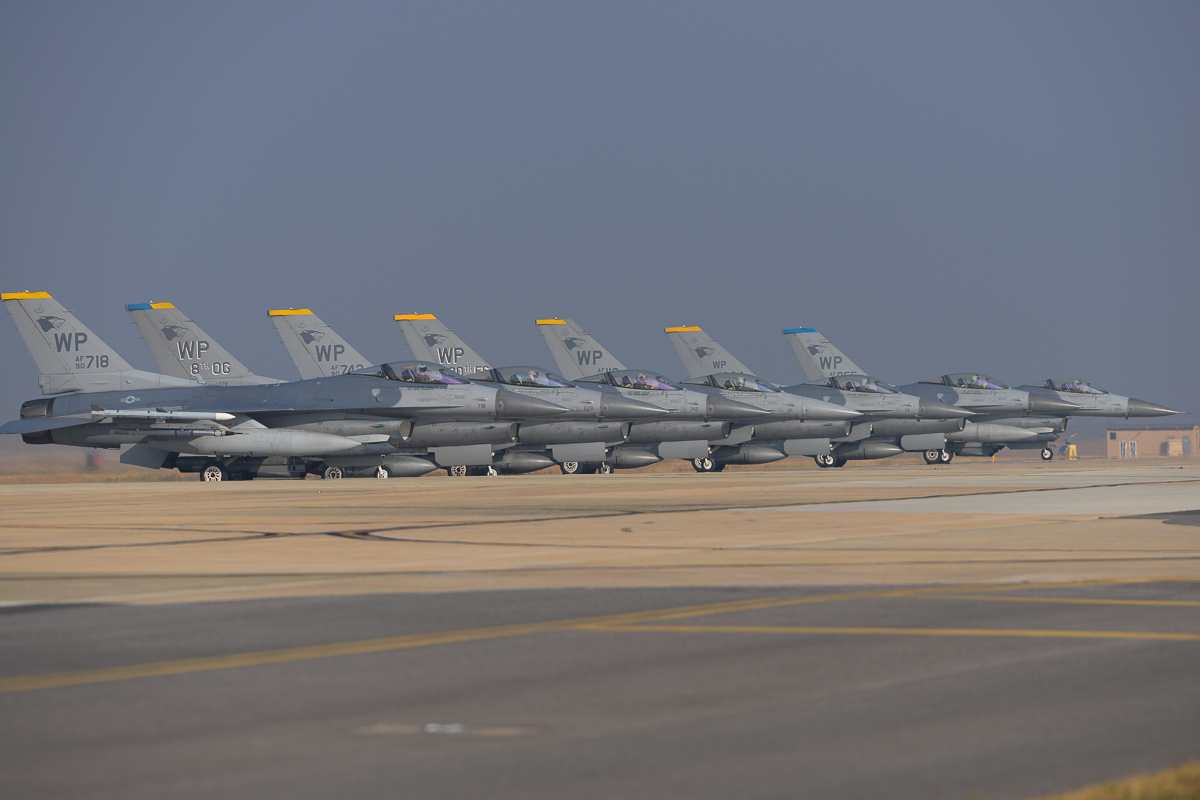
Cooperation & tension due to current affairs
Due to close cooperation of both ROKAF and USAF forces, their capabilities have improved exponentially. December of 2017 saw their biggest cooperated air exercise so far. Hundreds of aircraft including two dozen stealth jets began training as the United States and South Korea launched a massive combined air force exercise. The war games came a week after North Korea test-fired its most powerful missile ever, an ICBM that may be able to target the eastern seaboard of the United States.
The five-day drill, named Vigilant Ace, is meant to improve the allies’ wartime capabilities and preparedness, South Korea’s defense ministry said.
North Korea’s state media said that the drill pushes the Korean Peninsula “to the brink of nuclear war”. Such language is typical in North Korean propaganda because the country claims US-South Korean drills are preparation for invasion. This goes to show the tension and threat, something that I certainly felt during my time at Kunsan.
8th Fighter Wing
‘’Defend the base, accept follow-on forces, take the flight north’’
That’s the 8th Fighter Wing’s motto, nicknamed the Wolf Pack. It is tasked with conducting air-to-ground and air-to-air missions with the 45 F-16s that are assigned to the wing. Its mission is to deliver lethal airpower when and where directed, including interdiction, close air support, counter air, air superiority and suppression of enemy air defenses.
The base also houses the U.S. Army’s 2nd Batallion, 1st Air Defense Artillery. This battalion is equipped with Patriot Advanced Capability, or PAC-3, missiles. This ensures the base’s protection against tactical ballistic missiles, cruise missiles and advanced aircraft.
USAF & ROKAF Alliance at Kunsan AB
… the capability of the ROKAF/USAF has improved exponentially. We’ve developed our ability to train and fight together through RED FLAGs and our Peninsula-wide exercises MAX THUNDER and VIGILANT ACE. Our goal is the same: peace on the peninsula.
We hone our craft and ensure our readiness to deter attack. But if called upon to defend our neighbors and allies, may God have mercy on the Wolf Pack’s prey.’’ - Col. David G. Shoemaker
Personnel & Resources
Assignment to the installation at Kunsan Air Base is typically a one-year unaccompanied tour, meaning members are assigned to the installation without their families.
Apart from the 2,750 Air Force members stationed at Kunsan Air Base, it also employs 158 Army soldiers, 28 U.S. civilians and more than 420 local national appropriated and non-appropriated employees. All military members live on base in dormitories.
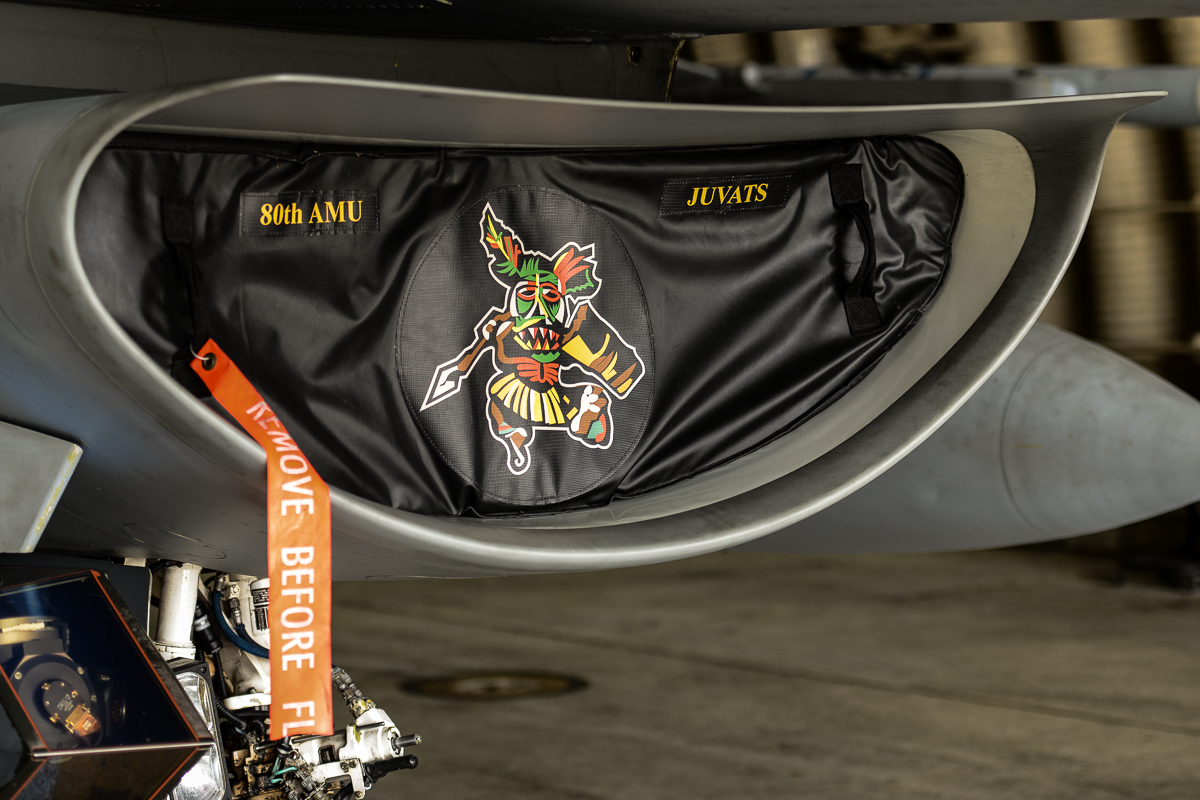
Organization
- Col. David G. Shoemaker‘’The 8th Fighter Wing wears its heritage proudly: the famed Wolf Pack of Robin Olds. The Wolf Pack is the most tight-knit, lethal unit in the US Air Force, and the Airmen of the Wolf Pack are extremely skilled at their craft.’’
The 8th Fighter Wing consists of four groups, each carrying the responsibility for the wing’s operations, maintenance, support & medical functions.
The 8th Operation Group trains and equips the 35th and 80th Fighter Squadrons (nicknames: Pantons and Juvats) in order to conduct air-to-ground and air-to-air missions.
The 8th Mission Support Group is tasked with supporting the base with civil engineering, communications, base defense, services, logistic readiness and overall mission support.
The 8th Maintenance Group is tasked with the daily flying and maintenance operations. This includes intermediate level aircraft maintenance, component repair and maintenance training.
The 8th Medical Group is tasked with managing the medical clinic, offering flight & general medicine, dentistry and military public health services.
The Army’s 2nd Battalion, the 1st Air Defense Artillery, consists of the Charlie and Delta missile batteries.
Other associate units that operate from the Air Base, amongst others, are the American Red Cross, Army Contracting Command Korea, American Forces Network-Korea, the Air Force Office of Special Investigations Detachment 613 and the U.S. Army 25th Transportation Battalion.
History
Built in 1938 by the Japanese as a fighter-interceptor base, Kunsan AB became the home of the U.S. Military Assistance Advisory Group at the end of WWII. When U.S. forces left Korea in 1949, the base was turned over to the Republic of Korea Air Force.
However, at the start of the Korean Conflict in July 1950, North Korean forces occupied Kunsan Air Base. The U.S. Army recaptured the base, together with Kunsan City, two months later. It was April 1951 that the 27th Air Base Group became the first Air Force unit assigned to the base. They oversaw the base’s reconstruction. It was during this period that a new 5,000ft runway was built. The first assigned aircraft wing at Kunsan was the 3rd Bombardment Wing, on August 22, 1951.
Aforementioned 3rd Bombardment Wing returned to Japan at the end of the Korean Conflict. This was the start of several Air Force units stationing at Kunsan AB. A variety of Air Base Groups and Squadrons operated and maintained the base in the decades after the Korean Conflict. It was in September 1974 that the 8th Tactical Fighter Wing was assigned to Kunsan Air Base. It was later re-designated the 8th Fighter Wing in 1992.

80 Fighter Squadron
The 80th Fighter Squadron, one of two fighter squadrons assigned to the 8th Fighter Wing.
The 80th Fighter Squadron’s vision is to lead the combat air forces as the most lethal fighter squadron of motivated, expertly trained warriors focused on the defense of the Republic of Korea, in order to maintain regional stability in the Pacific.
The Squadron flies the F-16 Fighting Falcon out of Kunsan Air Base and is assigned to the ‘Wolf Pack’ (8th Fighter Wing). Its mission is to be prepared to execute immediate air combat operations against any aggressors threatening the United States or the Republic of Korea. It stands ready to conduct counter-air, air interdiction and close air support in both day and night conditions.
History
The 80th Fighter Squadron was activated during WWII, in 1942, as the 80th Pursuit Squadron at Mitchell Field, NY. The Squadron’s first active combat mission was flown from Port Moresby, New Guinea, on July of the same year. Flying the P-39, it scored its first victory within a month when it engaged and destroyed six enemy aircraft. This was the first of over 200 victories ever since.
The squadron received P-38 Lightning aircraft in January of 1943, which it operated throughout the rest of the war. It was mainly tasked with escorting light to medium bombers and ground support attacks. As mentioned, its first combat base was in New Guinea, after which it moved through Borneo and the Celebes Islands. They have also been stationed in The Netherlands, East Indies and the Philippines. The squadron moved to Okinawa in August 1944, where it saw immediate action, flying missions against the Japanese mainland. The 80th flew its final combat mission of WWII in August of 1945, during which the squadron commander was shot down.
The squadron accounted for 225 enemy aircraft destroyed during the course of the war, receiving 10 battle honors and three Distinguished Unit Citations. 24 of its pilots (‘Head Hunters’) became aces, of which Captain Richard L. Bong became the American ‘ace-of-aces’.
Post war, the squadron moved to Itazuke AB, Japan. It was here that the squadron converted from the P-51 to the F-80. When the 80th was attached to the 8th Tactical Fighter Wing, the unit became the first to fly jet aircraft in combat. This was done with the aforementioned F-80 Shooting Star. The 80th was stationed at various bases during the battle for Korea, where it remained in continuous combat during the entire conflict. This ranged from striking the enemy’s front line to missions deep behind the lines to hit supply routes, bridges, build-ups and heavy troop concentrations.
In the period leading up to the Vietnam Conflict, the 80th was one of the first units to send pilots and planes to Thailand where they would fly missions against North Vietnam. Conversion to the F-4 Phantom II started in 1967 and the squadron was moved from Yokota AB to Kunsan AB in 1971. It was in 1981 that the 80th became the first overseas squadron to fly the F-16 Fighting Falcon. As part of a reorganization program, the 80th TFS was re-designated the 80th FS and re-assigned to the TFW. The 80th continues to support the United States in Korea with the same pride and excellence instilled in the squadron from the “Headhunters” of the past.

35 Fighter Squadron
The 35th Fighter Squadron, one of two fighter squadrons assigned to the 8th Fighter Wing, the Wolf Pack.
The 35th Fighter Squadron’s mission is to provide combat-ready F-16 C/D fighter aircraft to conduct air operations throughout the Pacific. The squadron performs a wide variety of activities such as air-and-space control, counter air, strategic attack, interdiction and close-air support missions. It is equipped with the latest, state-of-the-art ordnance. This enables day or night, all weather capabilities.
History
Its heritage dates back as far as June of 1917, when the unit was established as 35th Aero Squadron. It was originally an aircraft maintenance squadron, as the unit served in France from 1917 to 1919. It was, upon its return to the United States, demobilized during the American disarmament.
The need for strong air arm was recognized by American defense officials and the squadron was reconstituted in 1932, re-designated the 35th Pursuit Squadron. The 35th flew the P-12, PB-2, A-17 and P-36 out of Langley Field, Virginia. As the squadron was re-designated the 35th Pursuit Squadron (Fighter) and moved to Mitchell Field, N.Y., they started flying the P-40 Warhawk.
Entering combat in 1942 in the Pacific during WWII, another wide variety of aircraft were flown. This included the P-40 and P-38 Lightning, accounting for 124 kills during missions. The unit was, among others, based in Australia and New Guinea. It scored the final American aerial victories of the war on the 14th of August, 1945. Following the war’s end, they moved to Fukuoka Air Base in Japan to fly the P-51 Mustang.
Re-designated the 35th Fighter Bomber Squadron, it entered combat as the Korean War began. The 35th changed base multiple times throughout Korea, including Pyongyang, flying the F-80 Shooting Star (and later the F-86 Sabre).
The squadron started flying F-100s after the Korean War had ended. This was done from Itazuke Air Base, Japan. The F-100s were eventually replaced by F-105 Thunderchiefs in 1963 and the squadron moved to Yokota Air Base, Japan.
It was in 1972 when the 35th moved to Kunsan Air Base to fly the F-4 Phantom. She became the first to fly the F-16 Fighting Falcon in 1981, together with its sister squadron; the 80th Tactical Fighter Squadron. Block 40 F-16s were received in 2000, these aircraft carried Low-Altitude Navigation and Targeting Infrared for Night (LANTIRN) pods, enabling the Wolf Pack to take the fight into the night. Conversion was completed in 2001.
Different deployments of the United States Air Force frequently visit South-Korea. During the second half of 2017, the 118th Fighter Wing was stationed here for several months.

176 FS & 120 FS visiting Kunsan
Rotational Deployment in Korea of the U.S. Air Force Air National Guard 115th Fighter Wing was completed on November 8, 2017. It was part of the Indo-Asia-Pacific Theater Security Package (TSP) which, on a routine basis, deploys fighter aircraft to the U.S. Pacific Command and Pacific Air Forces. This is done to provide a deterrent against threats for both security and stability in the region.
Deployment to Kunsan of over 180 airmen from the 115th FW, 176th Expeditionary Fighter Squadron, was realized in early August of 2017. The airmen, nicknamed the ‘Badgers’, have frequently been active in the region since 2004. To quote the 176th EFS Commander: ‘’The TSP is part of the Air Force’s long-term initiatives to provide extra security in places where we need it.’’
Their major goal: Making the 8th FW & 7th AF commanders feel that they were a viable asset and of great support to the active duty squadrons. A warm welcome was felt in a time of heightened tension.
The Badgers took part in two large-scale exercises during their three months in Korea, working together with the active 80th & 35th FS. Even though operations differ between National Guard, Reserve and active duty units, the advantage for the 176th turned out to be experienced instructor pilots. The deployment became a great teaching opportunity, seeing that the guard had a lot of knowledge due to most of the crew having up to 20 years of experience. This was of great help to the eager and willing to learn Airmen of the 8th FW.
The TSP demonstrated the U.S. commitment to stability and security in the region but also ensures that the Wolf Pack remains ready to ‘Fight Tonight’. Something which is extremely important in hostile times like these.

120 Fighter Squadron
Kadena Air Base, Japan, saw the deployment of U.S. Forces in May of 2017. Approximately 250 Airmen and 12 F-16 Fighting Falcons from the 120th Fighter Squadron from Colorado Air National Guard Base were stationed here. For training purpose with the 80th FW, multiple of their F-16s were present at Kunsan Air Base during my visit here.
Special thanks to Kunsan AFB Public Affairs for making this visit possible.





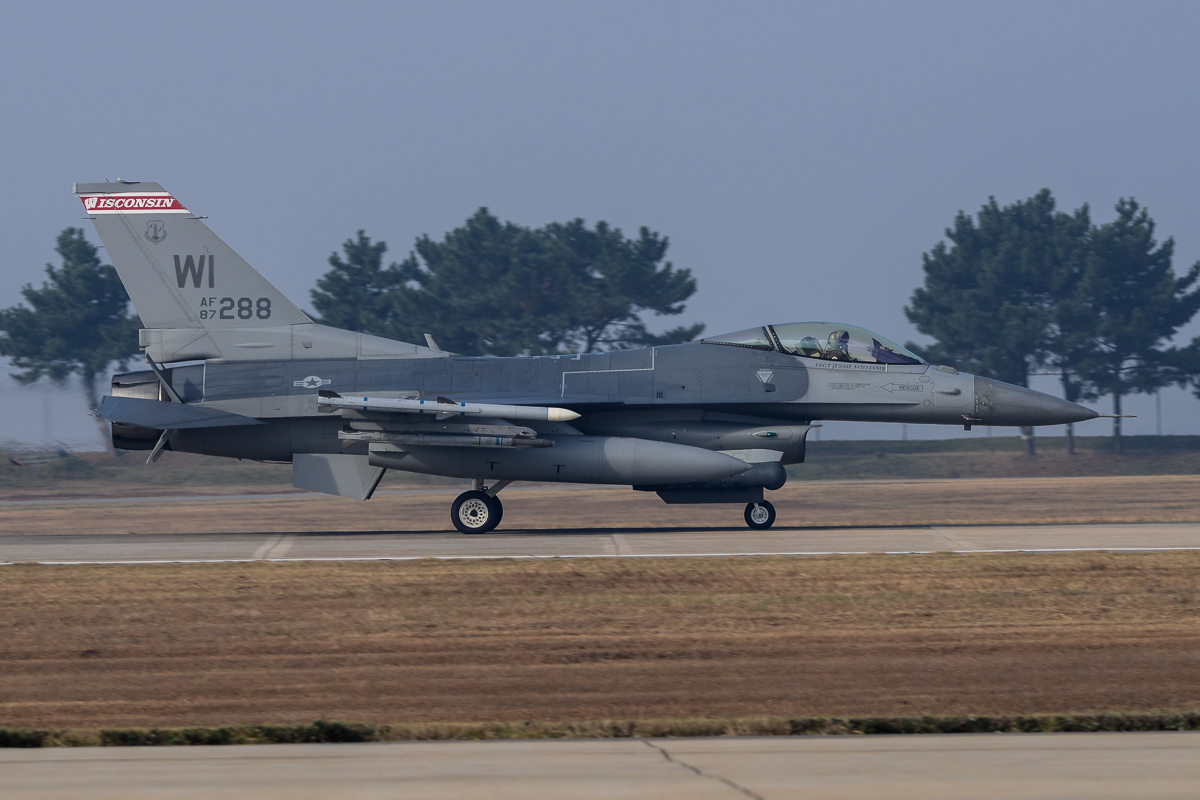


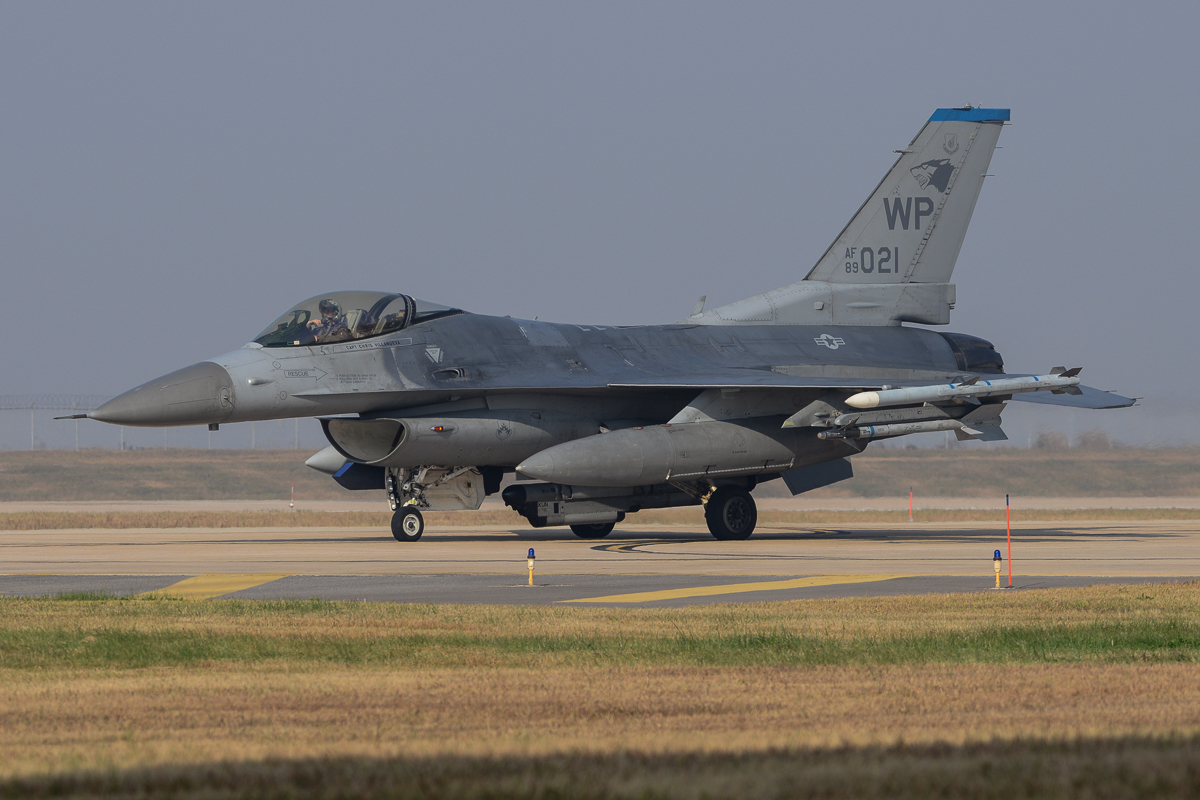



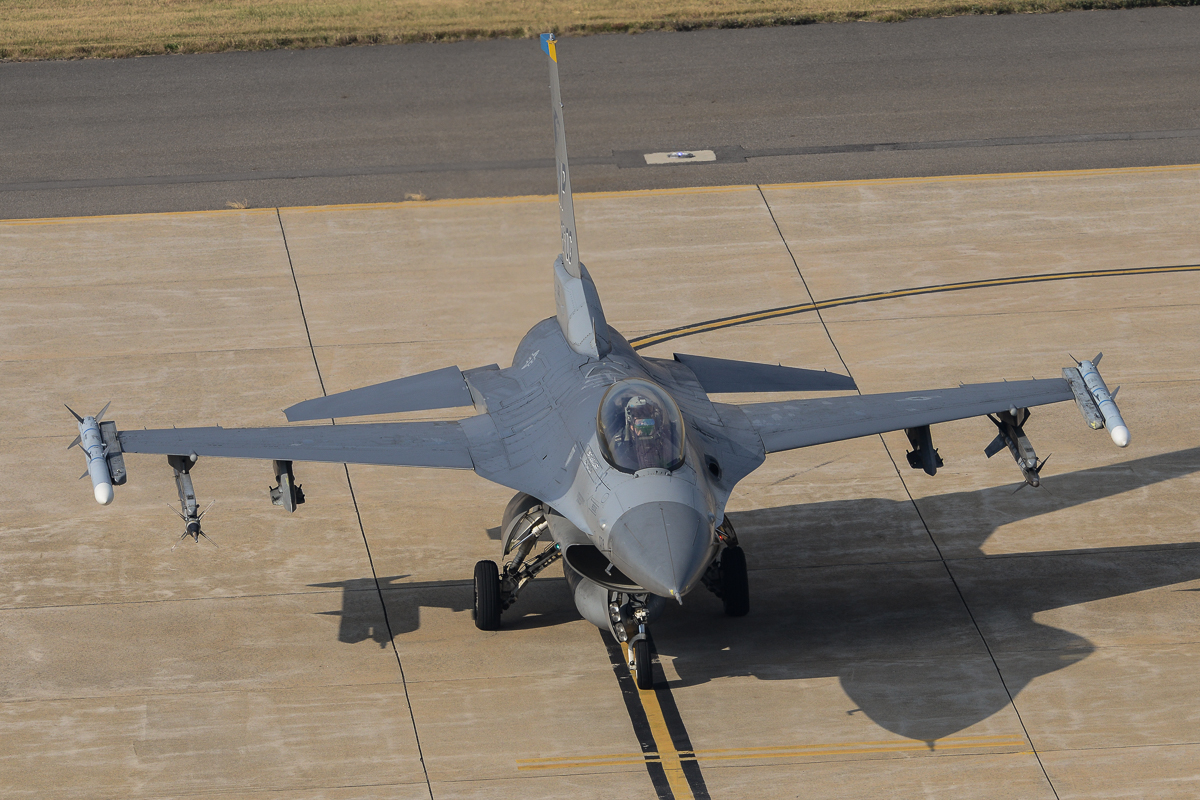
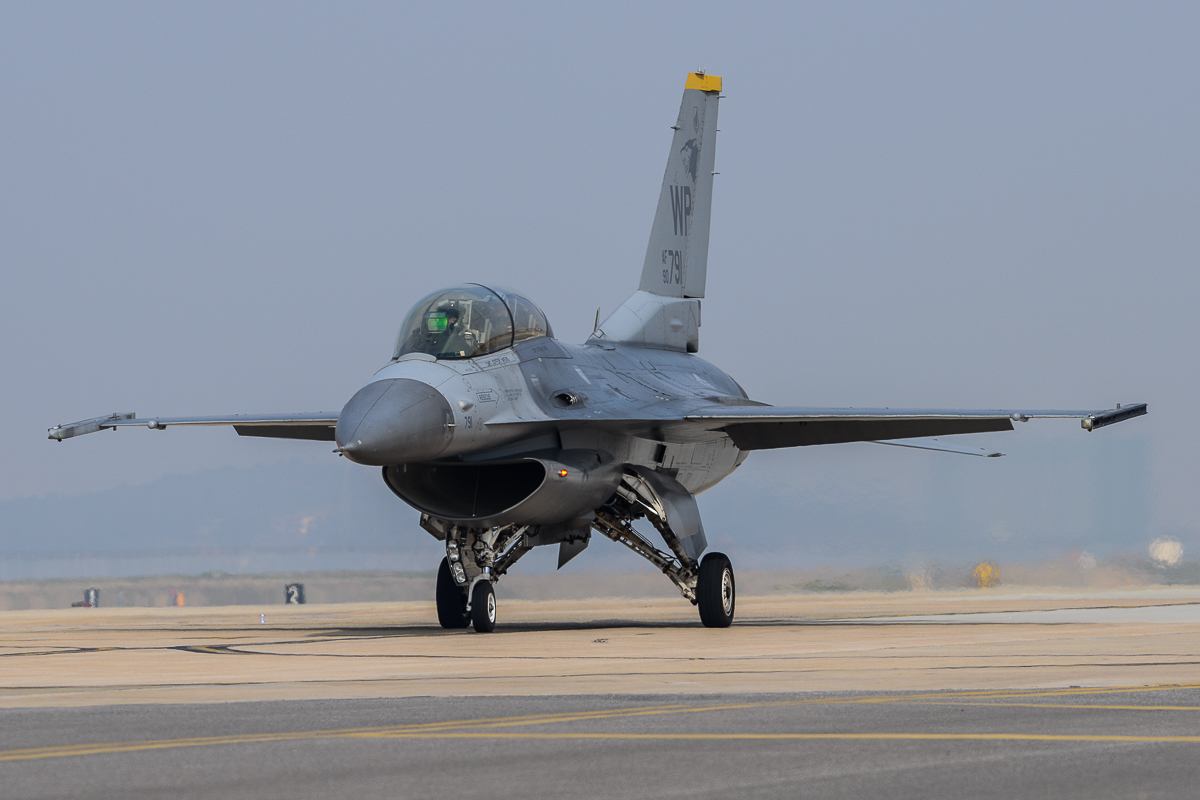





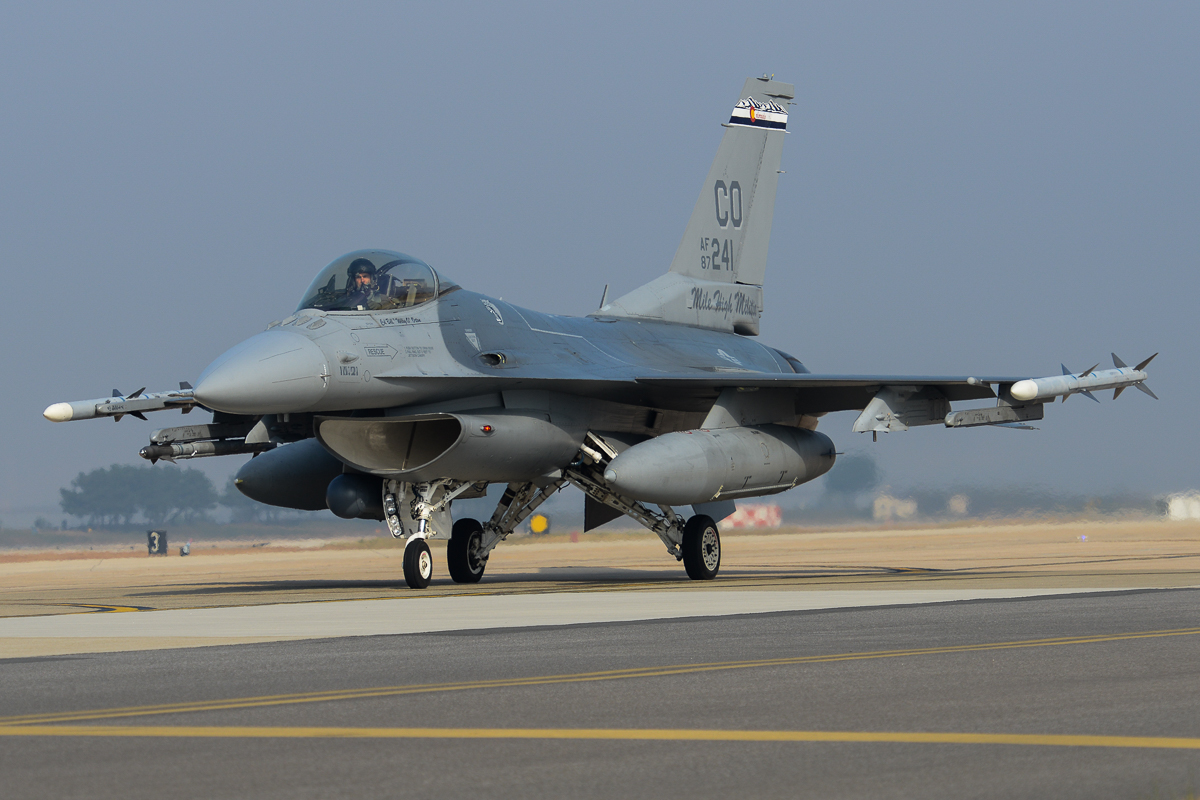
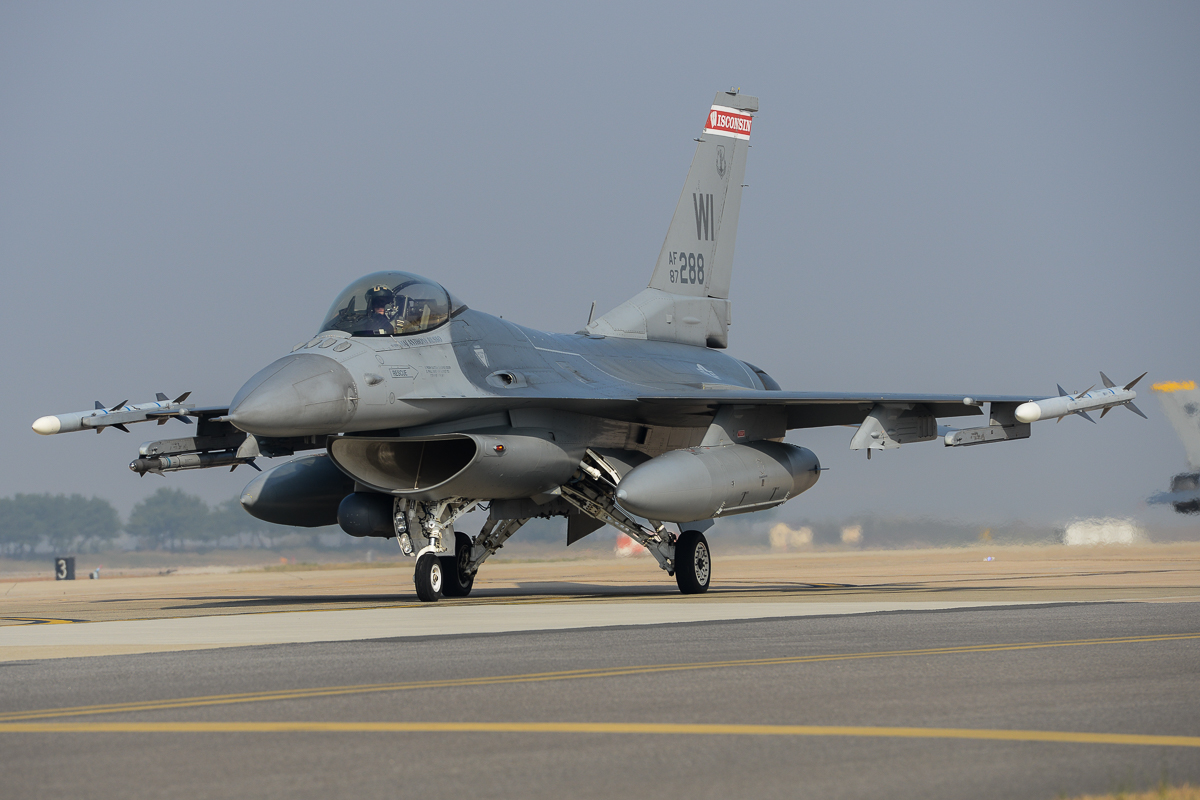
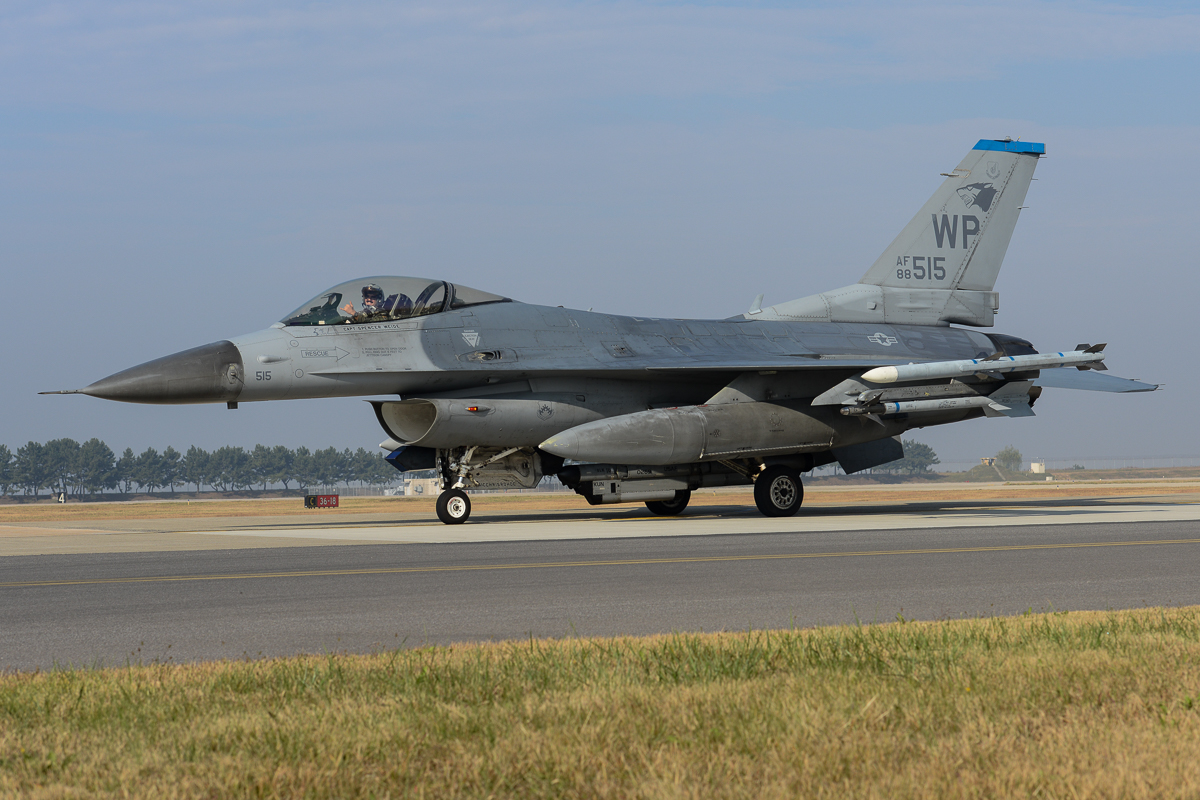
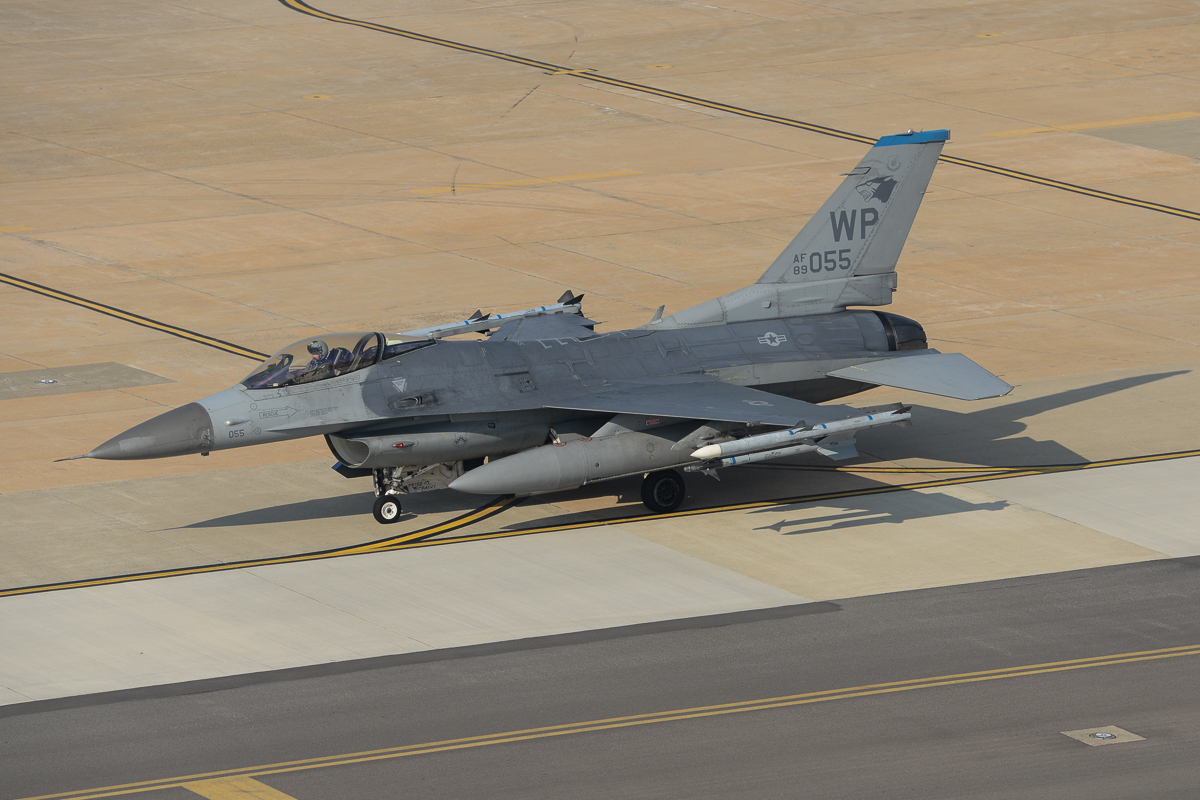

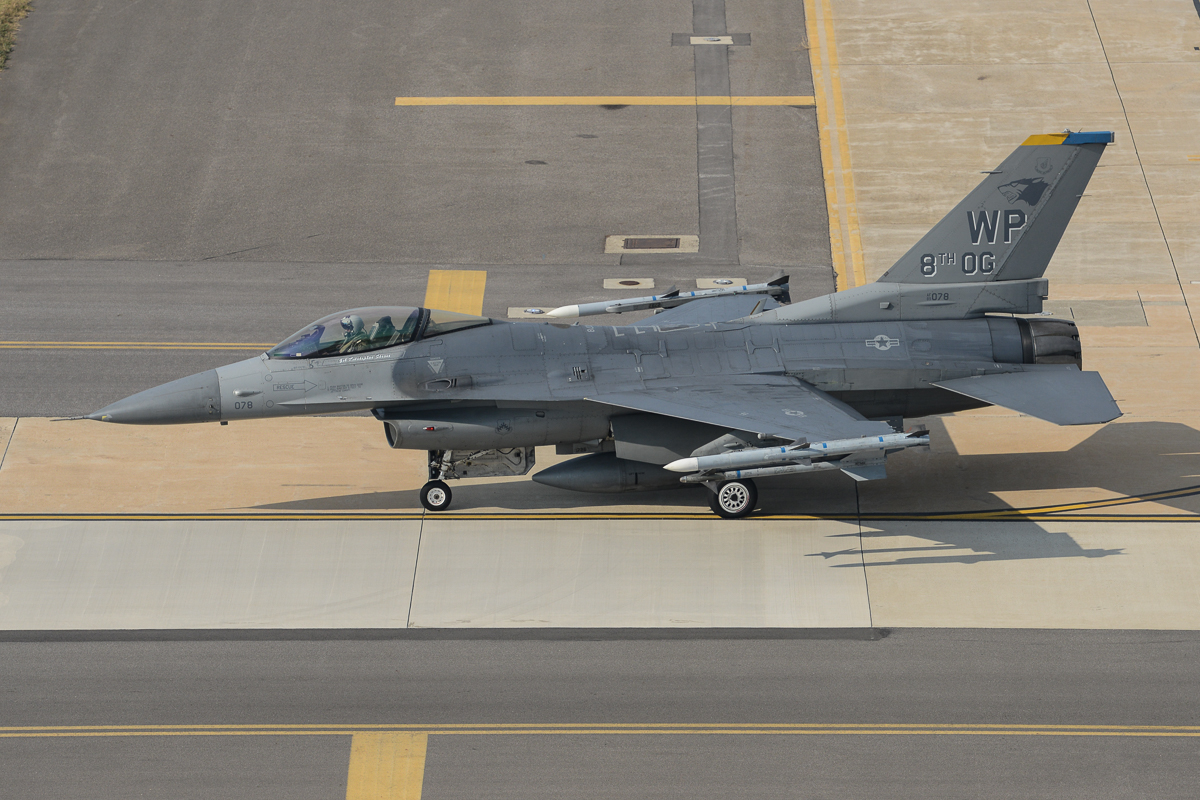






Peter van den Berg is from Coevorden, Netherlands. His love for military aviation began in 1980. The first airbase where he photographed was Soesterberg, Netherlands where the 32 TFS was stationed with the F-15. After photographing many military exercises in Europe over the years, Peter decided to spend the last 15 years visiting Asia and the USA. He regularly writes books for Veldhuis Media Group. Peter has written books about NAS Fallon, Red Flag and the Japanese Airforce.
In addition to publishing books, Peter is working as a teacher for senior secondary vocational education.
Peter uses Nikon equipment.
Peter can be reached at: [email protected]


